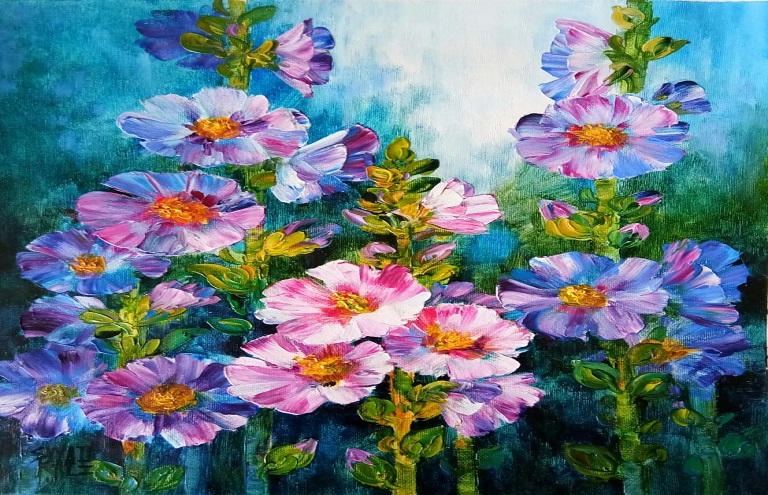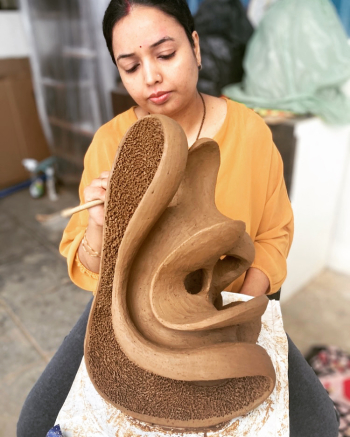
When it comes to innately bringing up creativity, arguably no medium is more eloquent than art. Artists and their art are endless and universal phenomena due to a profusion of imagery, the evocation of every detail, and a repertoire of senses. India has produced several doyens in these fields and the minds behind some very brilliant works of art.
For those who give art a special place in their hearts, we have compiled 4 perfectly created Indian Artworks in the form of Still life paintings. Let’s take a look.
Abanindranath Tagore’s Bharat Mata
Abanindranath Tagore's Bharat Mata is one of India's most famous paintings, with a muse so iconic that the connected work of art quickly became the face of a complete ideal. When it comes to the identity of the painting and the idea it represents, there is no deception. Tagore's vision of India during the times when she was under British rule and awaiting 'emancipation' is a saffron-clad woman holding a book, some paddy, a piece of clothing, and a rosary, much like a sadhvi. Tagore's vision of India during the times when she was under British rule and awaiting 'emancipation' forms the core of this masterpiece that became the very symbol of Swadeshi.
Surprisingly, this deeply moving work of art awakens the Goddess in women, drawing parallels to Bharat Mata, and so serves not only as a patriotic tribute to the nation but also as a role model for everyone. The painting is a significantly more symbolic rendering of India’s aspirations, despite its presumably human depiction.
The paddy portrayed in it is significant to the essence of food- vastra is depicted through the piece of cloth, and the value of education is rendered with the pieces of bread for salvation. Tagore has ensured to portray India- Free-Spirited- in the form of a masterpiece.
MF Hussain’s Horses
Maqbool Fida Hussain, famously known as MF Hussain is one of the prolific artists that India has produced. His is the name that evokes the vision of the unprecedented brilliance gift wrapped under the world of art.
Hussain owed allegiance to many of his constant muses, who appeared frequently in most of his works of art. Inventive and inventive as only someone with powers could be, Hussain owed allegiance to many of his constant muses, who appeared frequently in most of his works of art. Horses are a highly powerful work that centers on Hussain's preoccupation with the encompassment of strength and energy. It is one of the most famous paintings of this fantastic painter, albeit of all India.
This classic painting by Hussain, which bought an astonishing over a crore of rupees at Christie's in 2008, captures the canvas with bold contours and enormous magnificence. Hussain's concern with their unfettered spirit and might is immediately apparent, as is the energy emitted by the galloping boasts.
Jamini Roy and Her Three Pujarins
Jamini Roy, an acclaimed Bengali artist and one of India's early modernists, was a painter without peer when it came to the implementation of his various ideas, which were as distinct as they were similar. Roy began painting masterpieces as a student of Abanindranath Tagore, another amazing master of art and the founder of the Bengal School of Art. Despite educating oneself and getting trained in the western genre of art, Jamini Roy made it a point to choose to dwell on the Indianness within him- helping him to produce some of the most remarkable works.
The Three Pujarins is one such masterpiece. Midst the colors and strokes- it is sensed to carry the Indian essence. The Three Pujarins are known to be inspired by the folk art of Bengal. It is known to depict priestesses with three almond eyes worshipping. They are shown to be matured and holding on to their poise- even any symbolic leaning. The picture is undeniably beautiful, with its prominent blues and black contour lines, but the iconic indigo hue Bengali style sarees also serve as a subtly symbolic nod to the Indigo struggle against the British authority. Three Pujarins is more than a one-of-a-kind burst of color in terms of both aesthetic and symbolic impact.
Satish Gujral and His Days of Glory
Satish Gujral, an excellent painter whose oeuvre leans heavily on the terrible events of the Partition, paints an evocative depiction of the sorrow that shook him to his core in Days of Glory. As ironic as it may seem, the Days of Glory is a metaphor for all the emotions that had overtaken its artist, who believes his paintings are more a depiction of his sufferings than they are of the Partition. The work of art we're looking at here is a picture of helplessness, but not without dignity.
Wrap Up:
While you decide on your home decor, make sure that the Indianness in roots is reflected well. Amidst the discussion, try and keep the knowledge of Indian Artworks up to the mark! Reach out to Indian Art ideas and let the experts decide on your decor!
Choose on some amazing Still Life Paintings too!





















